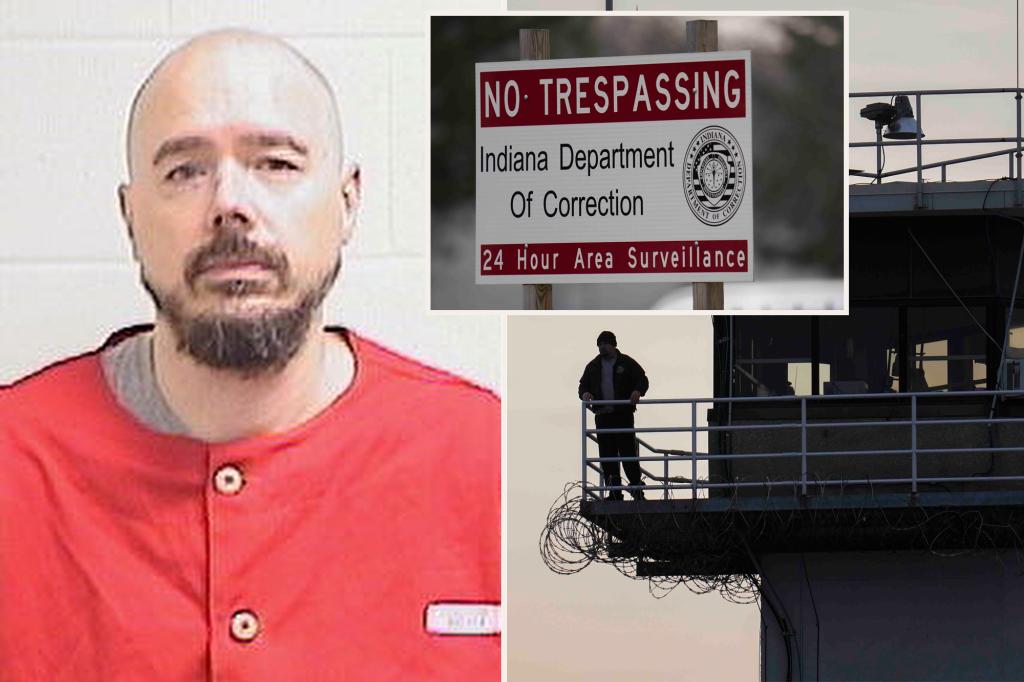Joseph Corcoran’s Impending Execution: A Quarter-Century Journey to Death Row
Joseph Corcoran, now 49, sits on Indiana’s death row, convicted of a quadruple homicide that occurred 26 years ago. Barring any last-minute interventions, he will be executed on December 18, 2023, marking Indiana’s first execution in 15 years. This execution, scheduled to take place before sunrise at the Indiana State Prison in Michigan City, stands in stark contrast to the 13 federal executions carried out at a federal prison in Indiana between 2020 and 2021. Corcoran’s case has reignited discussions surrounding capital punishment in the state, particularly focusing on the acquisition of lethal injection drugs and the complexities of the legal process. His impending execution follows a long and convoluted legal journey punctuated by appeals, denials, and a recent flurry of legal maneuvers aimed at halting the process.
The 1997 Quadruple Homicide and Its Aftermath
The events leading to Corcoran’s conviction trace back to July 26, 1997. Driven by stress over impending living arrangements following his sister’s engagement to one of the victims, a 22-year-old Corcoran fatally shot his 30-year-old brother, James Corcoran, and three other men: Douglas A. Stillwell, Timothy G. Bricker, and Robert Scott Turner. Court records depict a disturbed young man who, after overhearing conversations about himself, retrieved a rifle and killed all four men. While incarcerated, Corcoran allegedly boasted about shooting his parents in 1992, a crime for which he was charged and later acquitted. This dark chapter in Corcoran’s history underscores the violent tendencies that ultimately led to the quadruple homicide and his subsequent death sentence. The impending execution has also brought his sister, Kelly Ernst, who lost both a brother and fiance in the 1997 shootings, back into the public eye.
The Sister’s Plea and the Debate over Capital Punishment
Kelly Ernst, Corcoran’s sister, has publicly voiced her opposition to the death penalty, arguing that her brother’s execution will not bring closure or change the past. While acknowledging the gravity of his crimes, she believes that Corcoran suffers from a serious mental illness and calls for a more humane approach. Ernst’s perspective highlights the complex emotional landscape surrounding capital punishment, especially for those directly affected by the crimes. Her opposition to the death penalty, despite being a victim of Corcoran’s violence, underscores the deeply personal and often conflicting emotions surrounding such cases. This adds a poignant layer to the already contentious debate about the ethics and efficacy of capital punishment.
Indiana’s Return to Executions and the Secrecy Surrounding Lethal Injection Drugs
Indiana’s last state-administered execution was in 2009. The hiatus was primarily due to the nationwide shortage of lethal injection drugs, as pharmaceutical companies, particularly in Europe, refused to provide their products for executions. States have since turned to compounding pharmacies to obtain the necessary drugs, often shrouded in secrecy. Indiana, following this trend, will use pentobarbital for Corcoran’s execution, a drug also employed in 13 federal executions during the Trump administration. The confidentiality surrounding the source of these drugs has raised concerns about transparency and accountability in the execution process.
The Execution Protocol and the Absence of Media Witnesses
Indiana law dictates a specific protocol for executions, outlining the roles of various individuals and limiting the number of witnesses. While friends and family of both the condemned and the victims are allowed to attend, media access is strictly prohibited. This policy places Indiana among a minority of states that bar media witnesses from executions, raising questions about public oversight and the transparency of the process. Advocates for media access argue that it serves as a crucial check on the government’s actions, ensuring accountability and informing the public about how taxpayer funds are used to carry out executions.
Final Legal Challenges and the Question of Competency
Despite exhausting his federal appeals in 2016, Corcoran’s attorneys launched a last-ditch effort to halt the execution, arguing that his severe and longstanding paranoid schizophrenia renders him incompetent to be executed. They claim that his delusions and hallucinations, including the belief that prison guards are torturing him, have led him to willingly embrace execution as a means of escape. While Corcoran himself expressed a desire to be executed in a handwritten affidavit, his attorneys contend that this is a manifestation of his mental illness, not a rational decision. The courts, however, have thus far denied these appeals, paving the way for the execution to proceed as scheduled. The ongoing legal battle, coupled with the ethical questions surrounding Corcoran’s mental state, intensifies the debate surrounding his impending execution and underscores the broader societal questions about capital punishment in cases involving mental illness. The possibility of gubernatorial intervention remains, though Governor Holcomb has stated he will allow the legal process to take its course. The outcome of this case promises to have significant ramifications for Indiana’s death penalty protocols and the broader conversation about capital punishment in the United States.

